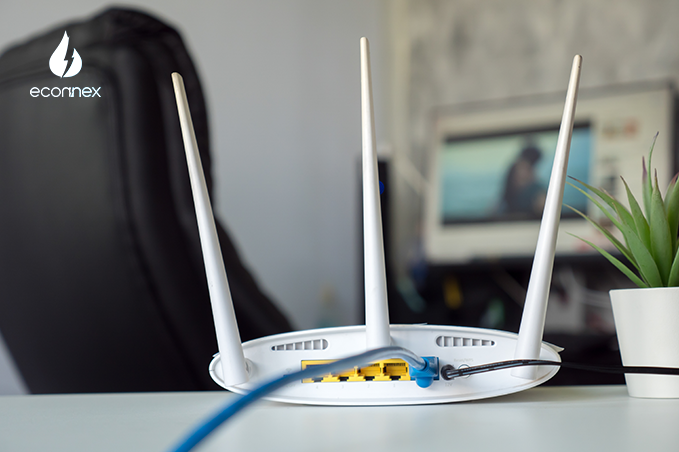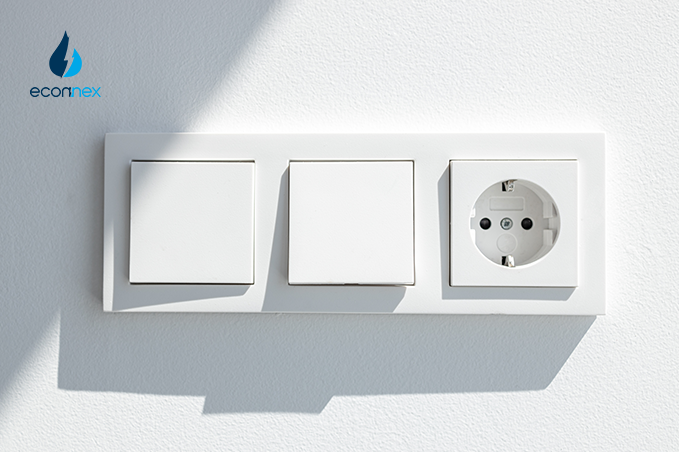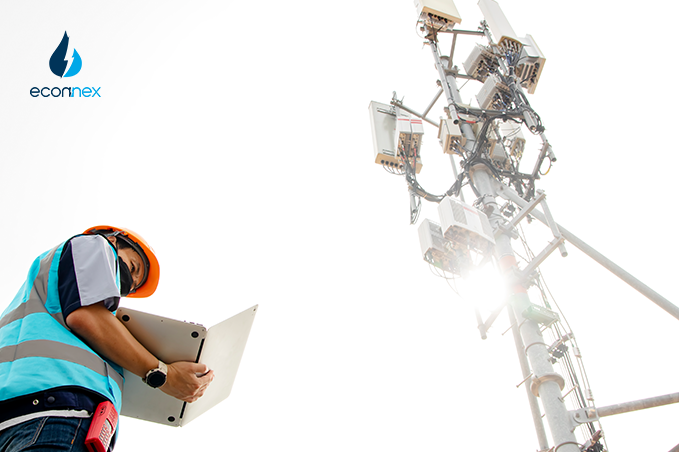Thinking about going solar, but not sure where to begin? We’ve put together this post to help you decide if solar is right for you.
Why go Solar?
Solar power can not only provide a cost-effective form of electricity. By using the sun’s energy, it also helps to reduce our impact on the environment.
What is Solar Power?
To put it simply, solar power harnesses the energy of the sun’s rays and converts it into electricity. Solar power is a renewable alternative to coal-fired or gas-fired electricity generation, that powers the majority of Australia’s electricity grid. By installing a solar system, you can harness the sun’s energy and turn it into electricity to use around the home.
How do solar systems work?
If you have outdoor lights in your garden, they will have a solar cell that turns the sun’s energy into electricity. Solar systems for your homes work in a similar way. They usually consist of solar panels and a solar inverter.
First, sunlight hits the solar panels, then the panels convert the sun’s energy into direct current (DC) electricity, which flows into an inverter. Then the system’s inverter converts the DC current into alternating current (AC) electricity, which you can then be used to power your home. (With DC electricity, the electrons flow in one direction around an electrical circuit. Whereas, with AC electricity, the electrons flow in alternating directions around a circuit.)
What are solar panels made of?
Most solar panels available in the market are made of monocrystalline, polycrystalline or amorphous silicon. Photovoltaic (PV) solar panels are made with a number of components, including silicon cells. These cells are made of silicon, like semiconductors. They are constructed with a positive layer and a negative layer that creates an electric field, like in a battery.
Types of silicon cells:
- Monocrystalline solar cells are made from a single source of silicon. They are more efficient than polycrystalline or amorphous solar cells but are more labour-intensive. This makes them more expensive to produce.
- Polycrystalline solar cells are also made of silicon. However, they are blended from multiple silicon sources. This makes them less expensive to produce than monocrystalline solar cells, but it also makes them less efficient.
- Amorphous silicon cells are made by depositing a thin layer of silicon on a surface such as glass, metal or plastic. This process allows for the production of thin film solar panels, which can be made flexible. Amorphous silicon cells are very inefficient compared to monocrystalline or polycrystalline cells.
How do solar panels generate electricity?
Solar panels work by allowing the sun’s particles of light (photons) to knock electrons free from atoms, generating a flow of electricity. With photovoltaic (PV) solar panels, they generate DC electricity.
What does a solar inverter do?
A solar inverter is like the brain of a photovoltaic (PV) solar system. It converts the DC electricity from the solar panels into AC electricity. Plus, it also provides ground fault protection as well as system statistics (such as the voltage and current on AC and DC circuits, energy production and maximum power point tracking).
Most small-scale solar inverters are central inverters (also known as centralised or string inverters). With central inverters, there is one single inverter for the solar system.
A more recent innovation for PV solar systems has been the introduction of micro-inverters. With micro-inverters, each solar panel has its own small (micro) inverter. This allows for the performance of each solar panel to be monitored.
Do solar panels work on cloudy, rainy or cold days?
Solar panels are most effective in direct sunlight. However, they can still generate electricity on cloudy, rainy or cold days. There are also solar panels that are powered by light instead of heat, which are effective in cooler climates. Solar batteries can also be used to store solar power, so it can be used when the sun isn’t shining.
What size solar system does a house need?
The size of the solar system you require will depend on how much electricity you use and when you use it. A typical home uses 20kWh per day, which equates to a 5kW system.
Each solar system’s capacity will vary depending on your location, the orientation of the panels and the amount of sunlight reaching the panels.
Having a technician conduct a solar panel efficiency test will help you choose the right system for your home.
A solar panel efficiency test will:
- Determine energy output The test uses a photovoltaic system which combines with latitude and climate conditions to determine the energy output of a solar panel.
- Ascertain solar panel size This will ensure there is enough space for the panels on the roof of your house before installation
- Determine solar panels positioning The position, pitch and tilt of solar panels will have a big impact on the system’s efficiency to produce energy.
- Help select the correct cooling mechanism A cooling system will need to be installed to prevent overheating (which can affect the overall performance of the solar system).
How much does a solar system cost?
Solar system prices will vary depending on the size required and where you live. But the good news is, prices have fallen in recent years. For example, if you live in Sydney a 5kW solar system may now cost around $5,000. However, this can rise to $11,000 in Darwin. If you’re purchasing a solar system, also look into whether you can receive a benefit under the Small-scale Renewable Energy Scheme.
How many years will a solar system last?
Photovoltaic (PV) solar panels usually have a warranty for 25 years. While film panels are generally guaranteed for only 2-5 years.
What maintenance is required?
As there are no moving parts, solar systems require very little maintenance. However, they need to be checked from time to time for any dirt or debris. For general cleaning, use a standard garden hose to wash the panels early in the morning or in the evening. (Tip: Avoid spraying cold water onto the panels when they are hot.) Automated cleaners that work like garden sprinklers are also available. They can be programmed to clean your panels automatically, as required.
Other things to consider when going solar:
- Solar meters
- Feed-in tariffs
- Solar batteries
Solar meters
They measure how much energy is being used and contributed to the national electricity grid. Whereas, standard electricity meters only measure the electricity that is being used from the grid. A solar meter will provide readings every 30 minutes.
- Gross metering vs Net metering With gross metering, all of the electricity produced by your solar system is sent to the electricity grid. Whereas, a net meter only records the surplus electricity sent to the grid.
- Solar meter costs The cost for a solar meter will vary depending on the area in which you live, the installer and the complexity. In some areas, customers don’t pay for a solar meter upfront. Instead, the household pays a ‘solar meter charge’ for the installation and maintenance of the meter. This usually ranges from 5 to 7 cents per day.
- Factors that might affect your electricity bill:
- Additional charges on your bill
When an electricity distributor supplies the solar meter, the cost may be passed on to the retailer. The retailer then recovers the meter’s cost through increased network charges.
- Moving from off-peak tariff to a time-of-use tariff (TOU)
TOU tariffs change depending on the time of the day you consume power. Energy used during peak hours will be charged at a higher rate, while off-peak times are charged at a lower rate. Note: Hot water, space heating, and air conditioning may be affected if moved from an off-peak tariff to a time-of-use (TOU) tariff.
To order a solar meter, contact your electricity retailer.
Tip: Before getting a solar system installed, ask your retailer about any potential tariff changes.
Solar feed-in tariffs
Solar feed-in tariffs allow you to make money from any surplus solar power you export to the electricity grid. Credits from feed-in tariffs will be deducted from your electricity bill. To learn more about feed-in tariffs, see Using solar feed-in tariffs to save.
Solar batteries
Solar batteries store excess electricity generated by your solar system during the day. If you have a battery, you’ll be able to access this excess electricity at night or on days when there is a low level of sunlight. If you have time-of-use (TOU) rates or pay monthly demand charges, you may also be able to save money by using power from your battery when rates are high.
- Choosing a solar battery Purchasing a solar battery depends on your needs and how are you going to use the battery. Prices of batteries vary depending on the storage size, efficiency level and life cycle. Batteries that are larger, more efficient and have longer life cycles will be more expensive. If you need to increase your storage capacity, you may also want to consider a model that can be stacked on top of each other.
- Solar battery charge life In many cases, a fully charged battery will be able to run your home overnight. However, this will depend on the use, size and number of batteries that are installed.
- Solar battery life span A solar battery’s useful lifespan is between 5 and 15 years. Proper maintenance can also have a significant effect on your solar battery’s lifespan. Protecting your battery from freezing or sweltering temperatures can also increase its lifespan.
- Solar batteries and feed-in tariffs A solar battery can be used to store and export surplus solar power during peak times at a higher feed-in tariff.
- Other things to consider:
- If your solar panel system size is small in capacity, try to upgrade it to a size that can charge a battery on a cloudy day. To do this, it will also require a battery inverter. A battery inverter converts DC electricity into AC electricity to discharge the battery, and AC energy into DC energy to charge it again. Remember, not all inverters fit with all types of batteries, so your choice of a battery will depend on the specifications of your solar system.
- Hybrid inverters (or multi-mode inverters) are relatively new and contain both solar and battery inverters in one box. A hybrid inverter simultaneously manages the inputs from both your solar panels and batteries. This allows it to charge batteries with either your solar power or the electricity grid, depending on which is more economical or preferred.
The benefits of solar systems
- No greenhouse gas emissions
- Does not depend on fossil fuels and oils
- No harmful effects on your health
- It can power your entire home, including the hot water
- Helps to reduce your energy bills
- You may be able to benefit from rebates
- You may be able to receive a feed-in tariff credit for any power you export to the electricity grid
- Systems require very little maintenance
- Solar energy can be used anywhere
Solar panels checklist
- Work out your current household energy usage (Tip: check your electricity bill for your average daily energy usage)
- Check if your roof faces north (this will maximise your system’s capacity)
- Make sure nothing is shading your roof, e.g. trees, power lines or other buildings
- Ask your local council if approval is required to install a solar system
- Work out the time it will take to pay back the cost of installation
- Assess whether you could benefit from installing a solar battery
- Make sure the solar panels meet the required standard and are covered by warranties
- Check the solar company is an Approved Solar Retailer and the installer is accredited by the Clean Energy Council (CEC)
- Get multiple quotes before deciding on the best solar system for your home
Key points
- Solar energy helps to save the environment and save money on energy bills
- Solar systems convert the sun’s energy into direct current (DC) electricity, which flows into an inverter
- The inverter converts the DC electricity into alternating current (AC) electricity
- A typical home uses 20kWh per day, which equates to a 5kW solar system
- A solar system’s capacity will vary depending on your location, the orientation of the panels and the amount of sunlight available
- Photovoltaic solar panels usually have a warranty for 25 years
- A solar battery can be used to store surplus solar power generated during the day for use at night
- A solar battery can also be used to make the most of solar feed-in tariffs.
- Check for retailer accreditation and product warranties when deciding on the right solar system for your home
Regardless of whether you choose to use a solar system or not, Econnex can help you to check the best energy deals in your area. Our goal is to help customers like you save more money, and in a way that’s easy for you.
Compare solar electricity plans now.




